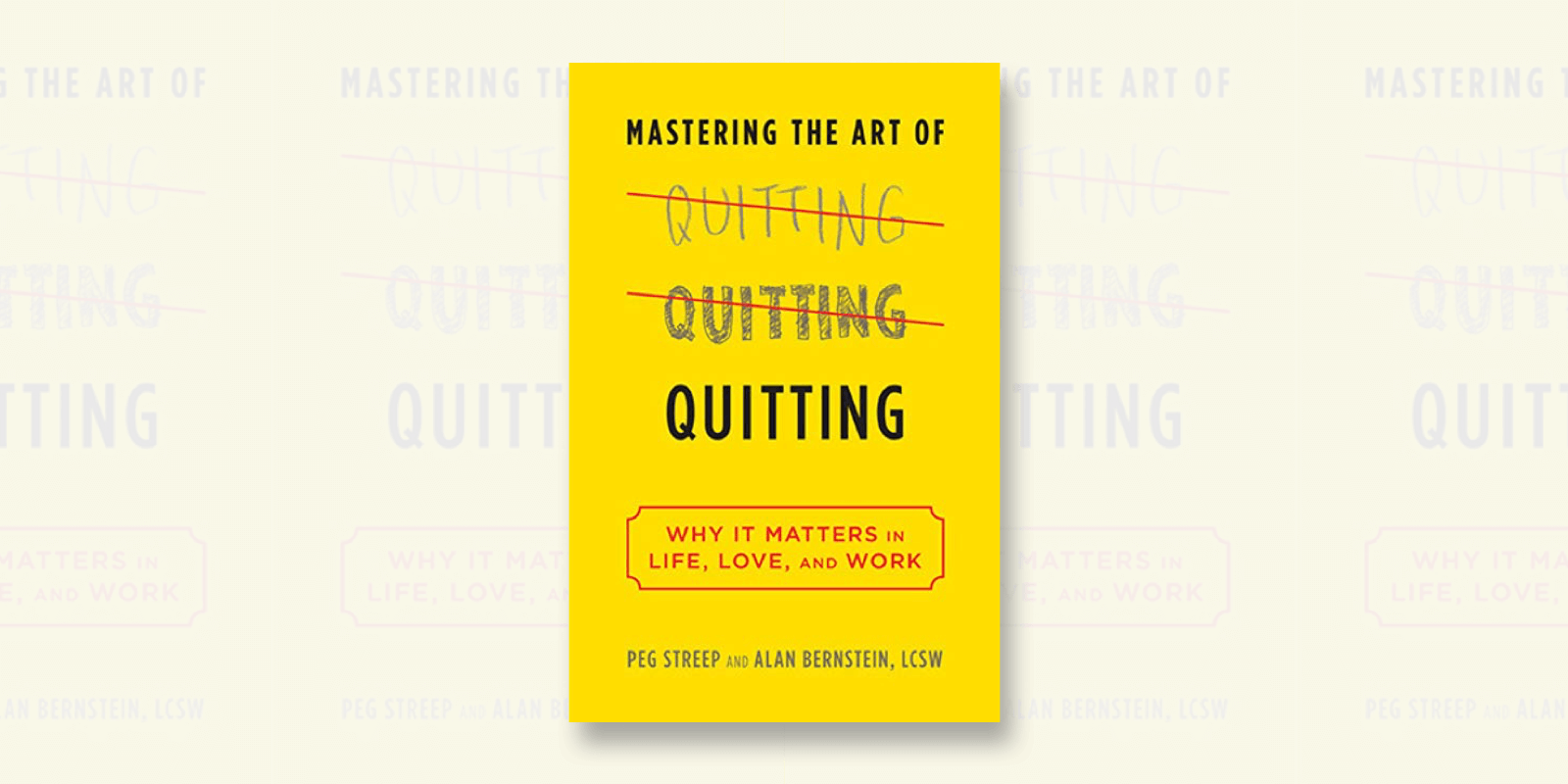A brief, practical summary of Mastering the Art of Quitting by Peg Streep & Alan Bernstein
Note: The new paperback edition of this book is published under a new title “Quitting: Why We Fear It—and Why We Shouldn’t—in Life, Love, and Work”
The Big Idea
Learning the art of quitting with mastery—or, as the authors describe it at one point, how to “bail with greater intelligence”—is a necessary but underrated component of reaching our goals and living life with satisfaction.
The Tiny Summary
Because of long-standing biological and cultural influences, our default is to persist with our goals and avoid quitting at all costs. And while certain forms of reactive, emotionally-driven quitting are unhelpful, intelligent, proactive quitting is actually a key ingredient for long-term success and happiness. Strategic quitting not only helps us avoid the emotional misery of chasing after unreachable goals, but it also helps us to identify and commit to newer and better goals—hence, the importance of mastering the art of quitting.
Core Ideas and Techniques
- Why Goal Disengagement is a key skill for success and happiness.
- Helpful vs unhelpful quitting and the crucial difference between Avoidance-Based Quitting and Values-Based Quitting.
- Why the Myth of Persistence is dangerous.
- Why we have trouble disengaging from bad goals as a result of the Near Win Effect, Availability Heuristic, Escalation of Commitment, Intermittent Reinforcement, the Above Average Effect, the Sunk Cost Fallacy, and Loss Aversion keep us stuck.
- The different forms of unhelpful, emotionally-fueled quitting, including: the Slacker Quit, the O.K. Corral, the Faux Quit, the Threatening Quit, the Disappearing Act, the Stealth Quit, and the Big Bang.
- The importance of Intrinsic Motivation vs Extrinsic Motivation for effective quitting and goal-setting.
- The 3 types of achievement goals.
- The 4 levels of goal disengagement.
- How Ironic monitoring and focus distraction help us disengage from unwanted thoughts and behaviors
- Managing negative moods and emotions with Affective Disengagement
- How the Impact Bias affects our ability to accurately predict our own emotional state after quitting.
- How to use Mental Contracting to set goals effectively.
- What really constitutes Emotional Intelligence and why it matters for mastering the art of quitting.
- Why Metacognition is essential for effective goal disengagement and artful quitting.
- How Mystery Moods negatively influence our goals more than we imagine.
- How to use Goal Mapping to clarify your values and make meaningful progress toward your goals.
- Overcoming procrastination with Implementation Intentions.
- The three factors of happiness
Selected Quotes
- Learning how to quit is an important, conscious counterbalance to the built-in habits of mind, many of which are unconscious, which keep us committed to a path we would be better off abandoning.
- Quitting isn’t an end in and of itself. It’s the necessary first step to rebooting and redefining your goals, and what you want from life.
- Persistence alone isn’t a surefire formula for success… The ability to quit fully is as valuable a tool to living well as is persistence.
- The only way to set new goals and open up new possibilities is to let go of old goals entirely.
- Mastering the art of quitting is about learning to be flexible when you need to so that you can meet whatever challenge you’re facing.
- Conflict between goals without disengagement can literally make you sick, not to mention profoundly unhappy.
- The ability to quit artfully requires the regulation of thought and emotion first, which then leads to motivational and behavioral change and the formulation of new goals.
- Being able to quit—even when a circumstance or situation isn’t of your own making—is one way of getting control back over your life.
- Becoming as conscious as we can be of what we really want takes time, effort, and more than a little strategizing.
- Metaphorically, we’ve all got to put down the ducky—the habits of the past, the comfort zones, the goals that are unmet, the efforts that have failed—if we’re going to move into the future.
- The goals we set for ourselves are reflections of both who we are and who we want to be.
- Managing our thoughts, feelings, and actions lies at the heart of both quitting with mastery and living with satisfaction.





1 Comment
Add YoursTimely – thank you. I recently quit (though not so artfully) my position within an organization that I helped found a number of years ago. I am feeling the loss emotionally, but am peacefully aware that my involvement there was not serving my life & family needs overall. I’m excited to start clarifying & tackling some new goals in this next season!